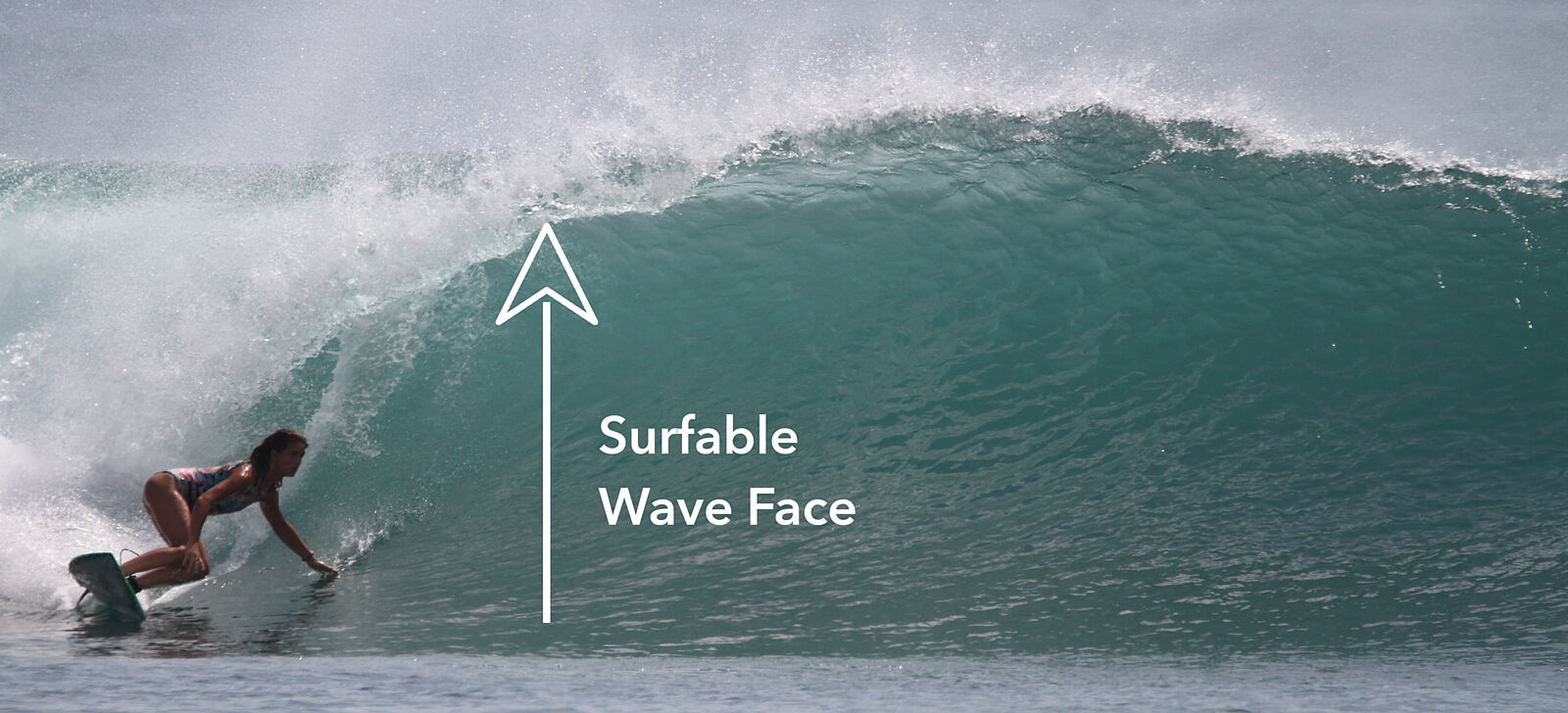
Surf wave measurement
"waves are not measured in feet and inches but in increments of fear."
~ Buzzy Trent
1950's Big Wave pioneer Buzzy Trent was all too correct. Determining wave size is a calculation often based on emotional response, rather than any physical reality.
Huge, massive or narly might describe how you felt as you dropped down the face but doesn't provide a particularly useable or predictable measurement.
Popular wave measurement methods
Bascom method
Developed by engineer, scientist and adventurer Willard Newell Bascom this method take a scientific approach. Wave height is the measurement from the peak of the wave and the resting height of sea level.
Surfable Wave Face method
Also taking a scientific approch a wave’s height is the measurement from the peak of the wave to the trough of the wave.
Hawaiian method
Developed by the original Waimea Bay big wave surfers a wave's height is measured from the back. This coresponds more to open ocean swell size reports than the actual surfable wave face and falls apart when applying it to waves like Teahupo'o or The Peak.
Our choice of methods
With the Bascom method usually leading to overestimation and the Hawaiian method to underestimation. Here on Surf South Sumatra we apply the Surfable Wave Face method.
Comparing the methods
Given the same wave applying each method would result in the following wave heights.
| Bascom | Hawaiian | Surfable Wave Face |
| 2 meters | 1 meter | 1.32 meters |